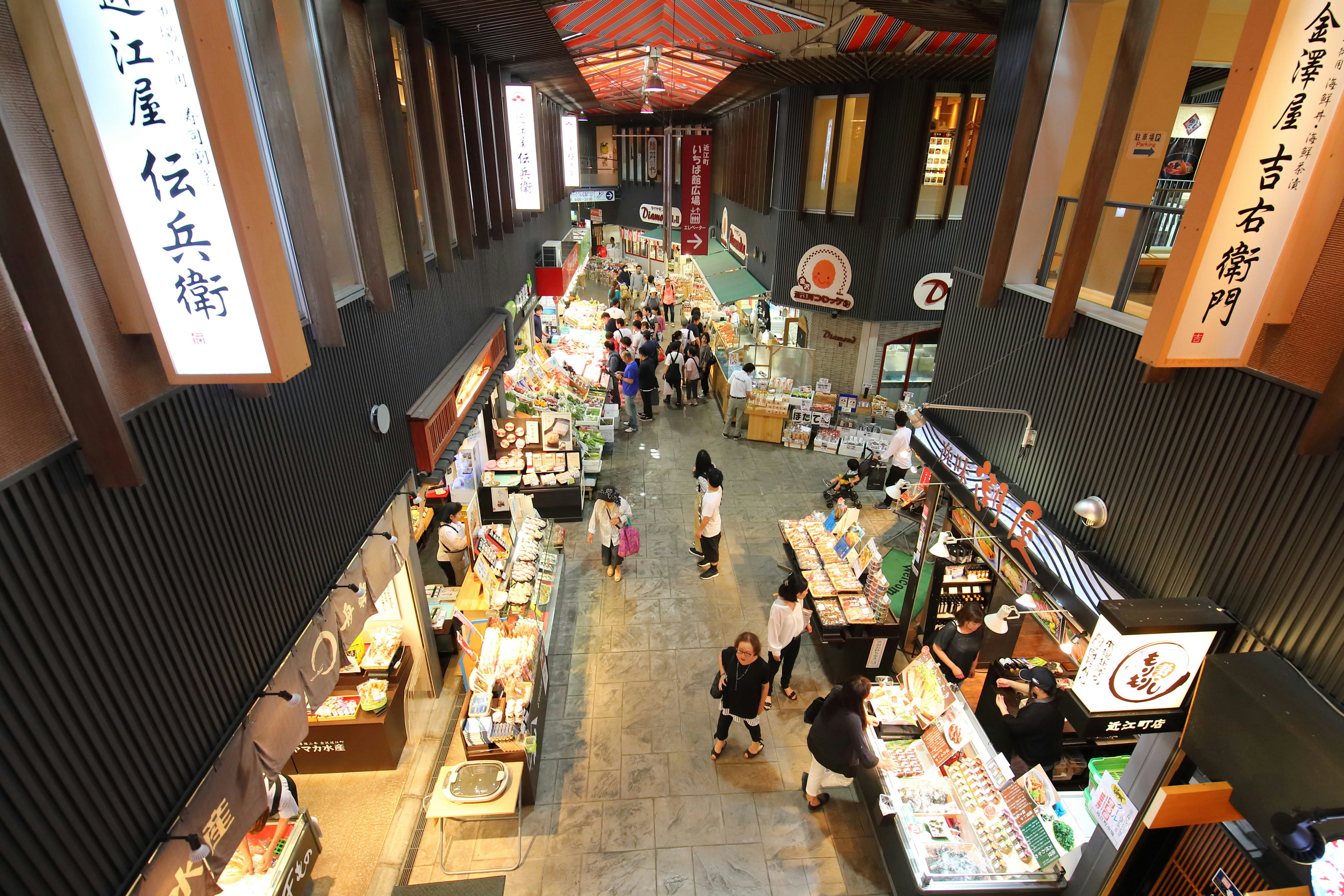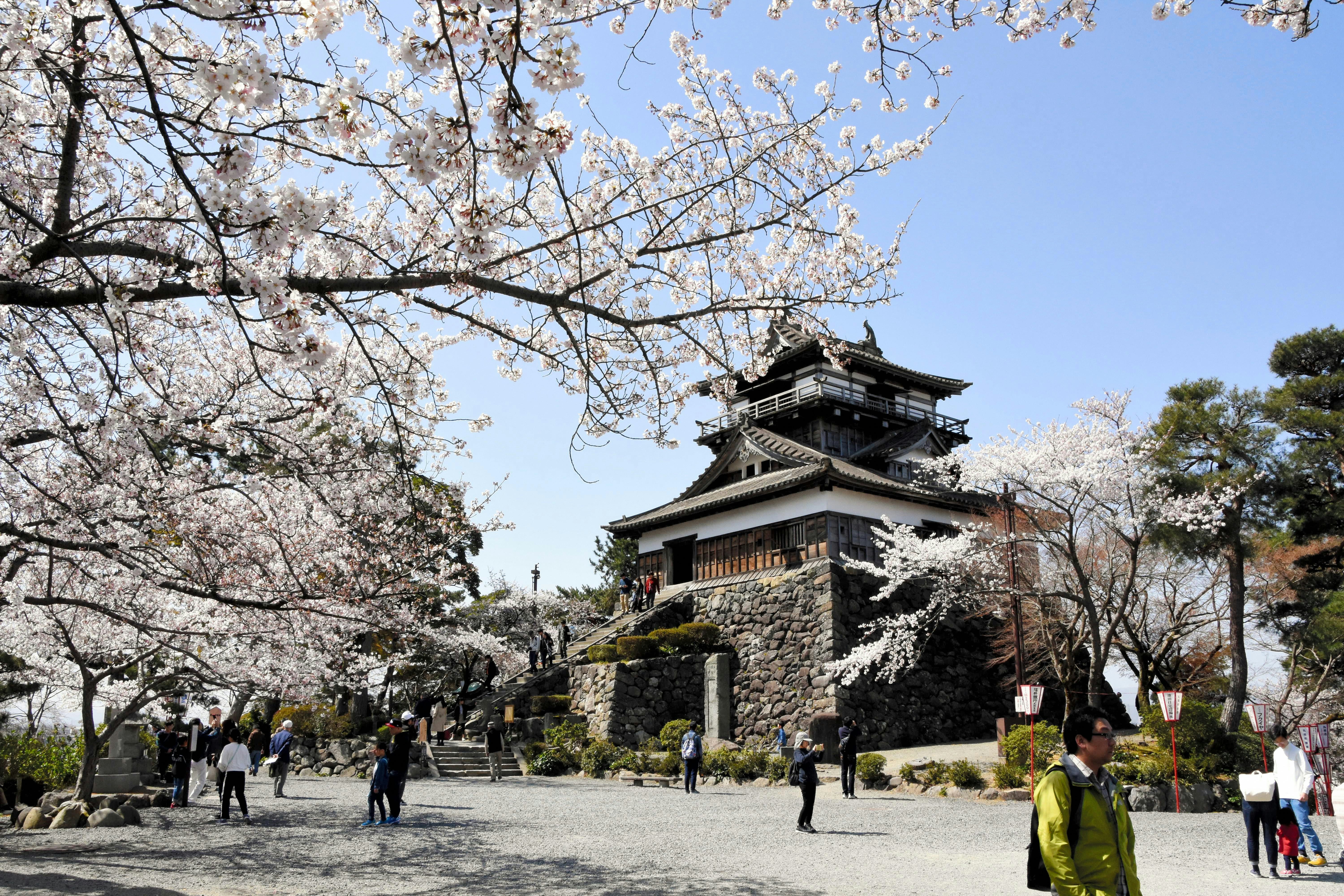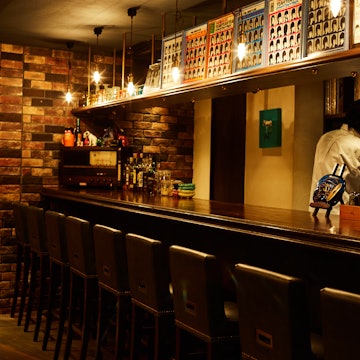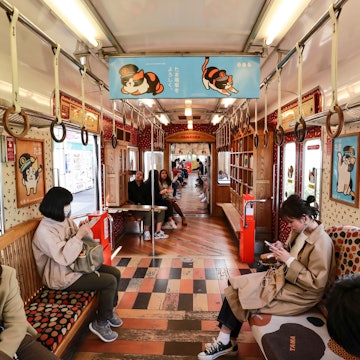
Exploring the highlights of Japan’s Hokuriku region by train
Mar 2, 2020 • 7 min read

Known for millennia by the moniker shōryudō (‘rising dragon’), Japan’s Hokuriku coastline is as dramatic as its evocative nickname would suggest. The land surges quickly up from the sea, culminating in revered mountain peaks entangled in hiking trails, while off the coast, the seabed’s steep incline creates nutrient-dense waters home to a vast array of marine life – which, after being expertly cooked and seasoned, draws hungry punters here from across the country.

If you want to explore the charms of this lesser-travelled region of Western Honshū, there’s no better way than by train, with a direct line meandering from Toyama in the north to Fukui in the south, calling at buzzing cities, cultural sites and beautiful national parks en route. Here’s our guide to seeing the best of Hokuriku by train.

Stop 1: Toyama – seafood beside a beautiful bay
It’s just under three hours on the Hokuriku Shinkansen from Japan’s capital Tokyo to the city of Toyama, passing through Japan’s dramatic, forested mountainous spine (often literally – there are lots of tunnels).
Once you hit the west coast, sweeping Toyama Bay soon appears, twinkling prettily under distant snow-capped mountains. Not only beautiful, the bay is also one of the country’s most biodiverse, home to unusual (and tasty!) marine critters like tiny firefly squid and white shrimp.
Locals swear by the shiroebi ten-don (white shrimp tempura over rice) at the appropriately named Shiroebi-tei, located on the ground floor of Toyama Station. Don’t let the vending machine ordering system fool you: the seafood here is the real deal.
Before getting back on the train, walk off your ten-don in the hills above town, getting acquainted with the 500 rakan (Buddha’s disciples) at Chokei-ji temple. Looking into their serene stone faces dappled with tree-filtered light is the most calm you’ll get this close to the city.

Stop 2: Takaoka – architectural gems and giant buddhas
Wandering around workday Takaoka feels like stepping back in time, but it’s just 20 minutes on the bullet train from modern Toyama. This city, unlike most others of its size in this part of Honshū, has resisted modernization. Much of the city’s mid-20th century wooden architecture remains intact, as well as the sweet antique tram cars that plod along its streets.
But if that’s not far enough back in history for you, stop by the awe-inspiring Zuiryū-ji temple, the most important example of religious and architectural heritage in this part of Japan. Commissioned by the local Maeda clan in the 17th century, this wooden temple is known for its carefully manicured lawns, stone gardens, and captivating blend of Japanese and Indian architecture.
On your way back to the station, don’t miss the Great Buddha of Takaoka, one of three of Japan’s Great Buddhas, soaring over Kojō park, the former site of Takaoka’s castle (demolished in 1615 after being in use only six years).

Stop 3: Kanazawa – famous gardens and fish markets
A 45-minute ride back on the Hokuriku Shinkansen delivers you to cosmopolitan Kanazawa, a bustling cultural capital to rival better-known (and busier) Kyoto in the south. The city’s well-preserved historic geisha and samurai districts, with wonderfully evocative antique wooden storefronts, signage, and hidden courtyards, warrant a few hours’ wander each.
From the station, it’s a 30-minute stroll to Kenroku-en garden, an Edo-period garden featuring all six of the traditional attributes of garden perfection (kenroku means ‘combined six’), including antique water features, colourful seasonal plants, and secret nooks for private contemplation. Arrive early, before the rest of the private contemplators.
Bustling Ōmichō fish market is on your walk back to the station, just in time for lunch after your morning constitutional. Duck out of the melee into tiny stalls for some of the freshest sashimi this side of the ocean, or pick up a fresh soy milk delicately flavored with sweet black bean or matcha powder – delicious!

Stop 4: Hakusan National Park – misty mountain hiking
Japan’s Hakusan mountain range, conspicuously occupying Kanazawa’s entire southern horizon, is a rambler’s – and photographer's – dream.
Hakusan (2702m; meaning ‘white mountain’) is the star attraction in the eponymous national park. Hiking trails start from Bettōdeai to the shrine at the summit, as well as to Hakusan Murodō and Nanryū Sansō, mountain lodges where you can post up on a tatami mat for the night and wake up to stunning views of misty mountains. Reservations, particularly during high season from July to October, are essential.
The hiking center at Bettōdeai is accessible via a two hour bus journey from Kanazawa Station. Facilities within the park are limited, so hikers should stock up in Kanazawa or Bettōdeai before setting out.

Stop 5: Kaga Onsen – the perfect place to relax
If you’re sore from your Hakusan exertions, it’s just 30 minutes back on the Hokuriku Shinkansen from Kanazawa to Kaga, one of Japan’s prettiest onsen towns.
Perched on one side of a rocky gorge overlooking a tumbling river below, Kaga is famous throughout Japan for its health-giving natural hot springs, and onsen ryōkan, traditional Japanese inns where the waters are piped in for personal soaking.
If you’re going to splash out on accommodation at any point in your trip, Kaga is the place to do it: some of the region’s most subtly elegant yet totally luxurious ryōkan are in this area. It’s hard to pick just one, but Kayōtei, in the neighboring village of Yamanaka, stands out slightly above its competitors. Views from private soaking tubs look out over the gorge, or on the private mountain hillside where staff forage for delicate kaiseki meals (Japanese haute cuisine).
Budget travelers can have just as much fun, though, soaking at the public Kissho Yamanaka onsen, and slurping noodles afterward at the cheap-and-cheerful Chōraku dumpling house.

Stop 6: Fukui – mighty castles and mysterious rock formations
From Kaga, it’s a further 30-minute train ride south to the city of Fukui, the capital of Fukui Prefecture and a traditional Japanese jōkamachi (castle town).
While historic conflicts, natural disasters and rapid modernisation have undeniably changed the face of Fukui, there are shreds of the city’s fascinating history for visitors to unearth. Chief among them is striking, 16th-century Maruoka Castle. Located on the plains north of the city, it's just one of 12 original castles that survived the post feudal ages with its keep intact. Its setting amongst hundreds of cherry trees (there’s an annual cherry blossom festival here in April) adds to its beauty, while the castle’s nickname, Mist Castle – owing to a legend about thick fog cloaking the fort from advancing enemies – adds to its mystique.
Visitors enticed by a good Japanese legend should also stop by Tōjinbō, a highlight along the rugged Sea of Japan coast to the northwest of town. The name of this unique, pillar-like rock formation has many origin stories, but one of the most colourful is its connection to an evil priest who was put to death here. Filled with rage, the priest summoned a storm from beyond the grave, which is said to have created the unusual, spiky landform which now bears his name.

Back in the city centre there’s the enormous Dinosaur Museum, which will be a sure-fire hit with younger travellers, and the quaint, koi-pond-dotted Yokokan Garden to enjoy. The food scene is great here too, with must-try staples like echizen oroshi soba noodles (horseradish noodles), and more creative fusion food, like the German-Japanese mash-up dishes served at Yoroppaken.
From Fukui, there is a convenient link to Kansai International Airport in Osaka, which offers international flights and is an ideal gateway in and out of the region. The train back to Toyama, meanwhile, takes around an hour with a change in Kanazawa. The JR Kansai-Hokuriku Area Pass and Osaka-Tokyo Hokuriku Arch Pass allows several days of unlimited train and bus travel on the Hokuriku coast.
Produced by Lonely Planet for West Japan Railway Company. All editorial views are those of Lonely Planet alone and reflect our policy of editorial independence and impartiality.















